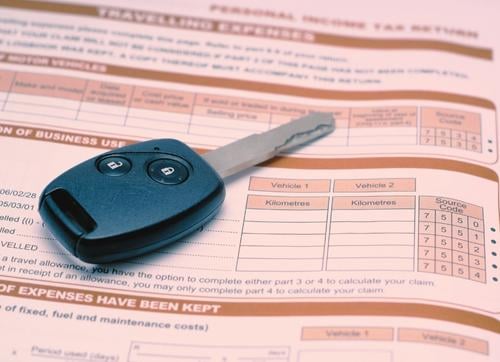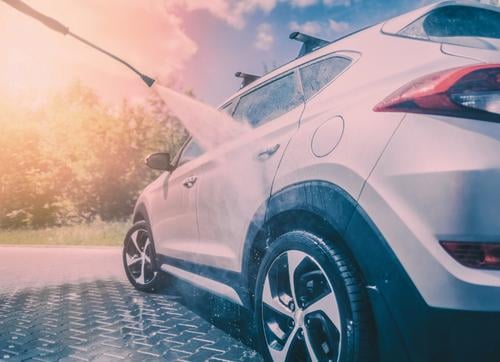Navigating the complexities of the logbook method for claiming work-related car expenses can be a confusing task for individuals and businesses alike.
Properly accounting for business and personal use of a vehicle is essential for accurate tax reporting and maximising deductions. The logbook method stands as a reliable approach that can be a great option to maximise taxes for businesses.
How does Claiming Work Related Car Expenses work?

When claiming motor vehicle expenses there are two methods that can be used: The logbook method and the cents per km method.
The cents per kilometre method allows you to claim up to a maximum of 5000 kms for work-related trips. It allows you to claim the distance travelled through the ATOs rate, which for the 2023-2024 financial year is 85 cents but changes frequently each financial year. This rate is meant to cover all car expense claims so keeping receipts isn’t very important. Read our blog on the cents per kilometre method here.
The logbook method involves more record keeping and allows you to claim the business use percentage of your entire running costs or operating expenses, instead of just the business kilometres. What you can and can’t claim however is complicated, as well as the eligibility and the way that records must be kept.
The logbook method offers a more detailed approach by determining the business use percentage of your car expenses claim, as opposed to relying solely on business kilometres. However, understanding what kilometres be claimed, what cannot, eligibility criteria, and the record-keeping requirements can add complexity to the process.
What are Business Kilometres?
Many individuals get confused and believe they can claim all the distance travelled in their car during a year. You are only allowed to claim the business kilometres as a tax deduction, not all travel when you claim car expenses.
Curious about what qualifies as work-related travel? While you can’t claim the distance to and from your regular workplace (bummer, right?), there are still some thrilling opportunities to save on your taxes.
The ATO allows you to claim the logbook method for business purposes if you’re travelling between different jobs in a day (think meetings or different job sites). Oh, and here’s a twist: if your home serves as a base of employment, you can even deduct the distance from there to your job.
For individuals in food delivery services and courier services, you are allowed to claim all kilometres travelled during work-related activities. Individuals in these services have different obligations so it’s best to consult with the ATO or a tax professional.
What is the Logbook Method?

Simply the logbook method requires you to record your vehicle trips for a minimum of 12 consecutive weeks, allowing you to calculate the business use percentage based on these records. This percentage is then used to claim car expenses.
The vehicle log book or app should include essential information such as the purpose of each trip, dates, and starting and ending odometer readings. By documenting your trips over this period, you create a complete record of your vehicle usage.
This logbook serves as the basis for determining the business proportion of your car expenses that can be attributed to business-related activities. By keeping an accurate logbook, you can claim the appropriate deductible amount for your car expenses in accordance with the logbook method.
Although this may seem difficult, if you decide to choose the logbook method you will only have to complete a log every 5 years, it is also well worth the tax refund you could be entitled to. Once you have completed a logbook you work out a business use percentage to make all claims, this method is mainly used by high income earners to reduce taxes.
Business use Percentage Example
To calculate the business trip percentage using trips, you need to keep a record of both business trips and regular trips for personal use throughout the 12-week period. Let’s take an example:
Steve maintains a logbook for a continuous 12-week period, during which he logs a total of 5,000 kilometres travelled. Out of this total, he identifies that 3,000 kilometres were for business purposes.
To determine the business use percentage, Steve would apply a simple percentage formula. By dividing the number of business kilometres (3,000) by the total kilometres travelled (5,000) and multiplying the result by 100, Steve can calculate his percentage:
Business Use Percentage = (Business Kilometres ÷ Total Kilometres) x 100
Using the example figures the business use percentage = (3,000 ÷ 5,000) x 100 = 60%
This means that 60% of Steve’s travel during the 12-week logbook period is attributable to business purposes.
Once Steve has determined his business use percentage, he can apply it to eligible claims for car expenses. The percentage serves as a proportional factor for calculating the deductible portion of various vehicle-related expenses.
What Expenses can you Claim?

Under the logbook method for claiming car expenses, you can deduct various expenses related to the business use of your vehicle on your tax return. These expenses include fuel and oil costs, repairs and servicing, lease payments, insurance premiums, registration fees, car wash and the depreciation (decline in value) of your car.
It’s important to keep records such as receipts or invoices to support these expenses. By maintaining a detailed logbook that accurately reflects your work-related trips, you can calculate the percentage of business use and apply it to your total car expenses to determine the deductible amount.
Remember to keep your logbook and supporting records for a minimum of five years to comply with tax regulations. Using the logbook method provides a systematic and reliable way to claim legitimate car expenses while ensuring compliance with Australian tax laws. It is also best to consult with a central coast business accountant to ensure you are in compliance with the ATO.
Free Vehicle Logbook Template
We have a comprehensive logbook template designed to assist individuals in accurately tracking and recording their vehicle usage for tax purposes.
With its user-friendly format, the template allows you to easily document essential details such as trip dates, starting and ending odometer readings, journey purposes, and total kilometres travelled. Download it now!


